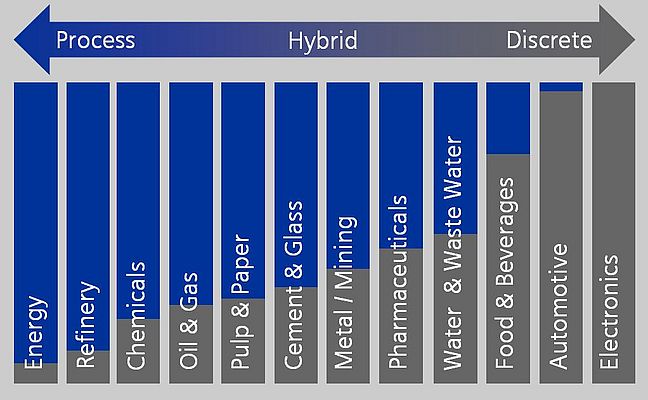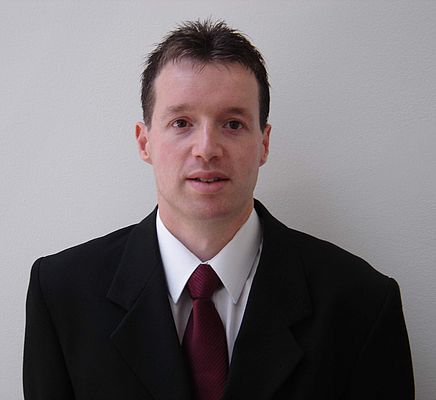PCN Europe talked to Johan De Blieck, Technology Manager DCS at Siemens Belgium about control systems in the processing industry. In the past it was fairly easy to determine whether a PLC or a DCS was right for an application. In recent years this has become more difficult, as technological advancements have allowed the technologies to merge.
PCN Europe:
What makes DCS the classical choice for processing applications?
Johan De Blieck:
“DCS is still the choice for typical process applications that require redundancy and deal with a large amount of advanced analog control, including cascade loops, model predictive control, ratio, and feed-forward loops. Especially applications which are more difficult to control, have more severe environments and where production failures are more costly. In this kind of applications, alarm management is crucial and centralised diagnostics and maintenance of field devices (cfr. Asset Management) can make the difference. A central engineering environment with one data base, typical for a DCS, is then a must.
The need for a DCS system to run for a long time without interruption has given rise to a specific functionality: "load, evaluate and go” also known as Configuration in Run (CiR), which is not needed in the PLC world. It concerns the possibility to test a new module in the real DCS system, while the rest of the application just keeps running. That way you can test with real data and evaluate the load of the controller before the final “go” is given to a new function.“
PCN Europe:
In which areas of the processing industry are DCS systems commonly used?
Johan De Blieck:
“If the value of a batch is high, either in raw material cost or market value, and downtime not only results in lost production but potentially dangerous and damaging conditions, the selection should be DCS. PLC is the likely choice in discrete manufacturing, if the value of the individual manufactured product is relatively low, or downtime - while resulting in lost production - causes little additional cost or damage to the process.
But in process applications running 24/7/365, downtime is one of the situations to avoid at all cost. And money is not the only deciding factor. Dangerous downtime is clearly another deciding factor in the system selection process.
The DCS plant requires an operator to make decisions and continuously interact with the process to keep it running. Within the HMI, faceplates and analog trends provide a critical view into what is really happening in the production process, while the alarm management system focuses the operator's attention on areas where he must intervene to keep the process running within its target performance range. In other words: in a DCS system, the operator has a key role and as a matter of fact, the HMI is the heart of the system.
But for manufacturers in the process industries, the procedure for selecting the best automation technology is not as easy as it once was. With the trend toward flexible manufacturing in industry, many of the applications in the process industries now share the requirements traditionally thought to be exclusive to either DCS or PLC. These hybrid applications typically require a process control system that can deliver both PLC and DCS capabilities.”
PCN Europe:
Could you refer to an example for this dual requirement?
Johan De Blieck:
“A&S Energie had built a biomass power plant in Oostrozebeke, Belgium alongside the industrial site of Spano NV, a provider of wood based solutions. Non recyclable wood waste (170.000 ton yearly) is processed and turned into electricity. The electricity generated matches the annual electrical consumption of 51.000 families (25 MW).
The challenge was to build a bio mass plant which not only processes wood waste, but also gives an added benefit through the creation of green energy. This required the implementation of a cost efficient and user friendly process control system which is able to integrate also classical PLCs in an ideal hybrid environment. The availability of only one clear alarm list on every client for every operator is a must.
The solution was a DCS process control system using SIMATIC PCS7 V7.0 architecture with 4 clients and 4 servers (2 redundant server pairs, one for the boiler and one for the rest of the installation) which are connected via industrial Ethernet to 5 SIMATIC S7-416-3 controllers and one redundant SIMATIC S7-417-4FH controller for the integrated safety system. There is still another SIMATIC S7-414-3 controller for the turbine which is programmed in the classical way (STEP 7) and visualized on the same screens as the PCS7 installation. The roller bridge has been connected wireless via Scalance W switches and is also programmed in STEP 7.”


















